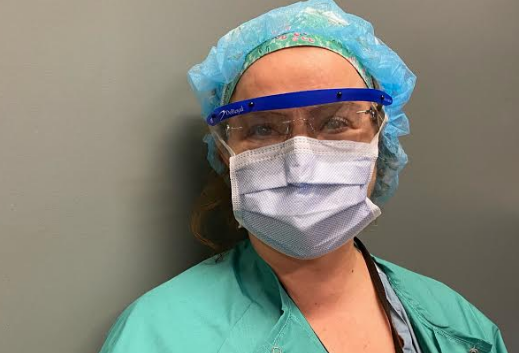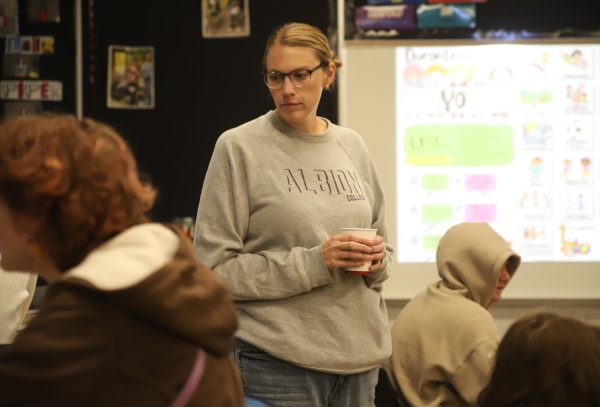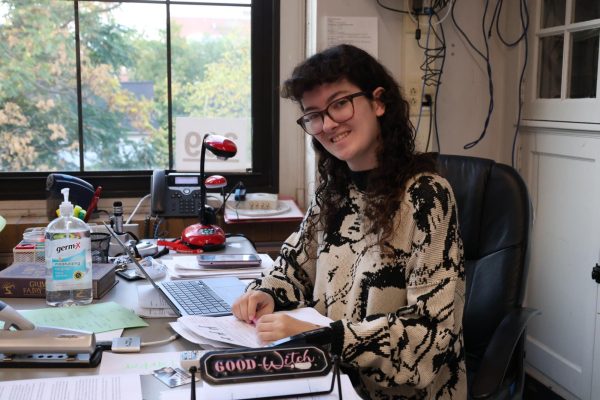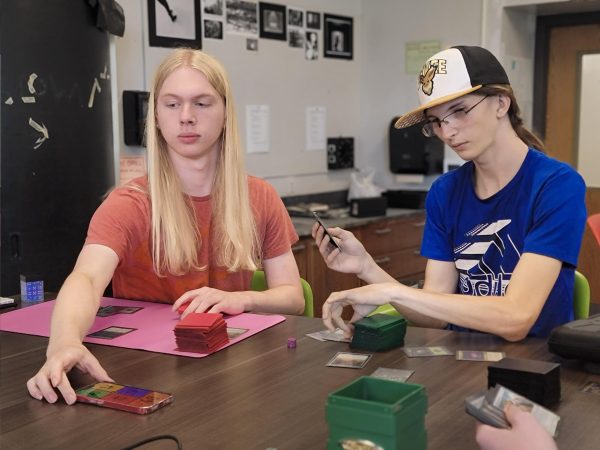Healthcare Workers In the Era of COVID-19

Many lives were changed earlier this year when Michigan Governor Gretchen Whitmer issued a stay-at-home order. Citizens were told not to leave their homes unless necessary. Schools, gyms, and restaurants were closed and gatherings of 50 or more were banned. The only people allowed to continue doing their jobs in-person were essential workers — people who work to save lives. Janet Rojo and Jim Salisbury are health care professionals whose jobs completely changed in response to the COVID-19 pandemic. They are two of the many healthcare workers who have risked their lives to help the nation fight through these unprecedented times.
Janet Rojo
On her first day tending to COVID-19 patients, Janet Rojo found herself in a completely different environment. Her new role was drastically different from her regular position: for 20 years, Rojo had worked as a nurse anesthesiologist in surgery.
Rojo was asked to help out at an Intensive Care Unit (ICU) in Detroit built specifically to treat COVID-19 patients. She accepted. A meeting was set up for all of the healthcare workers at the ICU to talk about their roles. Rojo’s was to help with breathing and manual tasks.
On the first day of assuming their new roles, there were extra things to think about for healthcare professionals. Personal protective equipment (PPE) was one of them. Rojo said she and her colleagues had to practice putting on their PPE. She described it as feeling like she was back in her early days as a healthcare professional when everything required extra thinking.
“You want to make sure you’re doing it okay because [the] consequences could be grave,” Rojo said. “I don’t want to get sick, and I don’t want to make anyone else sick.”
Rojo, like many healthcare workers, says she saw a shortage of PPE at the beginning of the pandemic.
“I think we were exposed before we realized,” Rojo said. “We didn’t have protection, and a lot of my coworkers got very sick.”
At the time Rojo was brought in to work at the COVID ICU, Detroit was one of the worst in the nation. One reason she believes Detroit was hit so bad was that they were on a learning curve and did not have enough information about the virus to respond to it effectively. At the time, hospitals were still developing techniques and purchasing equipment to fight the virus.
Rojo says working in Detroit when hospitals were overwhelmed was incredibly difficult. She had nightmares about bringing the virus home to her family and describes her experience in Detroit as “traumatic.”
Rojo ended up leaving Detroit and moving to a hospital in Washtenaw County. She said there was a big difference between how she felt in Detroit versus how she felt in Ann Arbor.
“At the hospital in Detroit, it was much more chaotic,” Rojo said. “I think they got slammed with a lot of cases quickly. It was very, very different in Washtenaw County, where I felt like the planning was ahead of the crisis… Two very different scenarios.”
Jim Salisbury
On an average, pre-COVID day, Jim Salisbury can be found helping patients who have just come out of the hospital. He is an occupational therapist working in home health — his main job is to help patients relearn how to do everyday tasks. Salisbury says his days are very different now.
The main difference is the type of patients he treats. Salisbury is used to treating patients who have had elective surgery, such as hip and knee replacements. Now, he helps patients who have been released from the hospital and are convalescing from COVID-19.
The virus has changed a lot of things for healthcare workers. Many are having to learn new ways to navigate these challenges. One such challenge Salisbury now faces is communicating with his patients.
“It’s hard to make the connection because they can’t see your face,” Salisbury said. “They can’t really see you smile.”
Salisbury has noticed that some patients are even offended when they see him wearing a mask.
“[Patients have said], ‘You think I’ve got it,’” Salisbury said. “And I’m like, ‘Well, anybody could [have it].’The surgical mask did not protect us anyway. It only protected them.”
Salisbury also noticed his patient’s neighbors paying close attention when his car pulled into the driveway.
“Early on, when I would put on my face shield and [other PPE] at the trunk of my car, I could see the neighbors looking out the windows and then freaking out,” Salisbury said. “A couple of people even asked me, ‘Do they have it?’ Which obviously, we can’t say anything. But now, nobody even notices me. Everybody just goes about their business. I feel like I could walk down the street in full gear, and nobody would look twice at this point.”
Working in Detroit, Salisbury works with a lot of low-income multi-generational homes. He said that the families are stressed out. He loved working in Detroit before the outbreak because Detroiters have such a good sense of humor. Despite working with patients who have just come home from the hospital, Salisbury is used to joking around with them. Now, he said, everybody is worried.
“I haven’t run into anybody in Detroit yet who doesn’t know somebody who has died,” Salisbury said. “Everybody knows somebody or knows of somebody on their block. The areas I work in are the very poor parts of Detroit. Most people there have had somebody in their family die.”
Salisbury has watched the community come together to take care of each other. People are doing as much as they can without breaking the social isolation rules, Salisbury said. People are shopping for other people, making food and delivering cards.
Salisbury used to work in a very different situation. Earlier on in his career, Salisbury worked for home health systems that did not take Medicare. He worked with people who had good insurance, “who were living in high-end assisted livings that were very rich.” The community he works with now is much more helpful and supportive.
At the beginning of the pandemic, Salisbury had trouble getting enough PPE to protect himself and his patients. “We know that N95 masks are the only things that protect you, period,” Salisbury said. “But there weren’t enough to go around. So they were telling us to use surgical masks. Well, surgical masks only protect us from giving it to somebody else. They don’t protect anybody from getting it. At one point, I was thinking about not seeing my kids at all. I was just gonna have them stay with their mom until this is over.”
Thankfully, Salisbury got his hands on some extra N95 masks through a friend.
“So now, I have enough N95 masks that I can wear them with all my patients. Now, I feel safe. I can’t tell you there’s no fear: I’m still stressed out, but it’s a lot better now that I have the N95 masks with every patient.”
A fear both Rojo and Salisbury share is bringing this deadly virus home to their families or catching it themselves. Both have had nightmares about this possibility. Even though there are so many worries and dangers these individuals face they come to work every day ready to do their crucial life-saving work.








